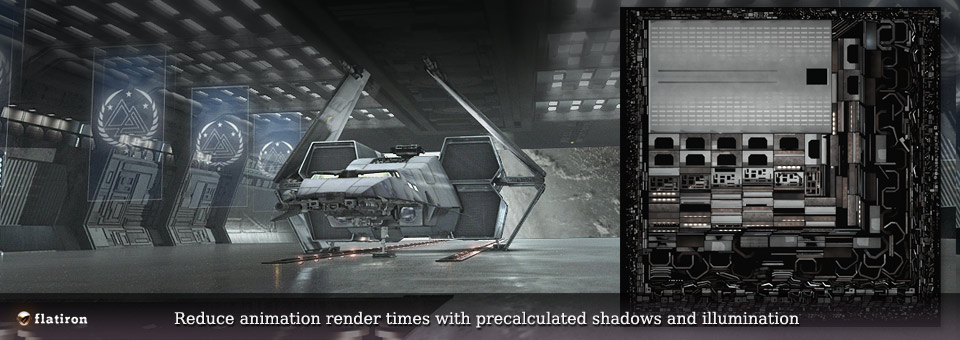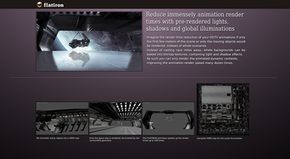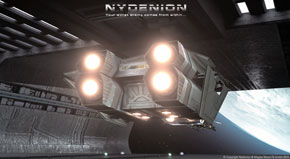Nydenion is a science fiction feature film project, produced and designed by Magna Mana FX GmbH. Director Jack Moik, famous German model designer, painter and Star Wars geek, included hundreds of CG environments in the production that were used in combination with real miniature spaceships.
The flexible production required a similar flexibility from the teams working on the CG environments. The demand for high quality, realistic lightning and rendering of hundreds of high detail CG shots was reflected in long render times. In order to fit into the available time and budget constraints these render times needed to be optimized without sacrificing the quality of the results.
In the specific case presented here we are looking at a long sequence of 40 seconds, followed by 10 additional shots from different perspectives, totaling in approximately 2 minutes of cg scenes in full HD. The complete shot was done in 3d. Due to camera flights and rotation it was not possible to replace large portions of the render workload with matte-paintings. In addition, almost the half of the visible scene was covered with gloss reflective ground, and a large space ship, also painted with many glossy reflection maps, was flying though the scene. Render times per frame exceeded acceptable levels even after careful optimization of FinalGather, reflections and motion blur. Therefore Flatiron was utilized to cut down render times significantly.
The main problem for the render times were GI and the glossy reflections. The Hangar environment was completely static, large parts of the whole scene could be baked into sets of pre-rendered textures. Illumination and shadows of most areas never changed and re-rendering them for every single frame would have been a huge waste of resources. Using Flatiron to replace most of the scene surfaces with baked maps that only needed to be rendered once for the whole scene, reduced the total render time significantly.
Since most parts of the scene were originally created with procedural textures they were not unwrapped at all prior to using Flatiron. Since Flatiron unwrapped the geometry for the baked textures automatically this was no problem and even more time could be saved by ignoring the UV mapping for most of the objects completely.
The second problem were multiple reflection bounces where the glossy surfaces of the space ship reflected the reflections of the glossy hangar ground. This not only caused high render times, reducing the accuracy introduced very unpleasant noise and flickering effects in the reflections. To avoid this the whole hangar was baked completely into textures and toggled to be invisible to the camera. This resulted in a very light weighted environment that just cast shadows onto the space ship and projected the baked color data for the ship’s reflective hull.
In the training material section you can find a tutorial video that shows how the hangar was baked in two versions. Once how it was baked completely for the reflections onto the ship’s hull and once for areas which would not be influenced by dynamic objects). The baked maps were directly generated through Flatiron in 4096 by 4096 pixel resolution, complete with bump, diffuse and FinalGather light solution as HDRI images. No further processing of the maps was required. The baked images were used to complement the HDRI spherical lightning with the huge advantage of being a real geometry and not a distant panoramic image.
The final result were massively reduced render times without introducing any quality reducing noice effects. Since all multipass material layers and light and shadow effects were baked with Flatiron in a single bitmap with just few clicks it took only minutes to prepare the scenes of the whole sequence. In total the complete production time was cut down to 10%, without any visible difference.
We thank to Magna Mana Productions and producer Jack Moik for the material and production coverage!



